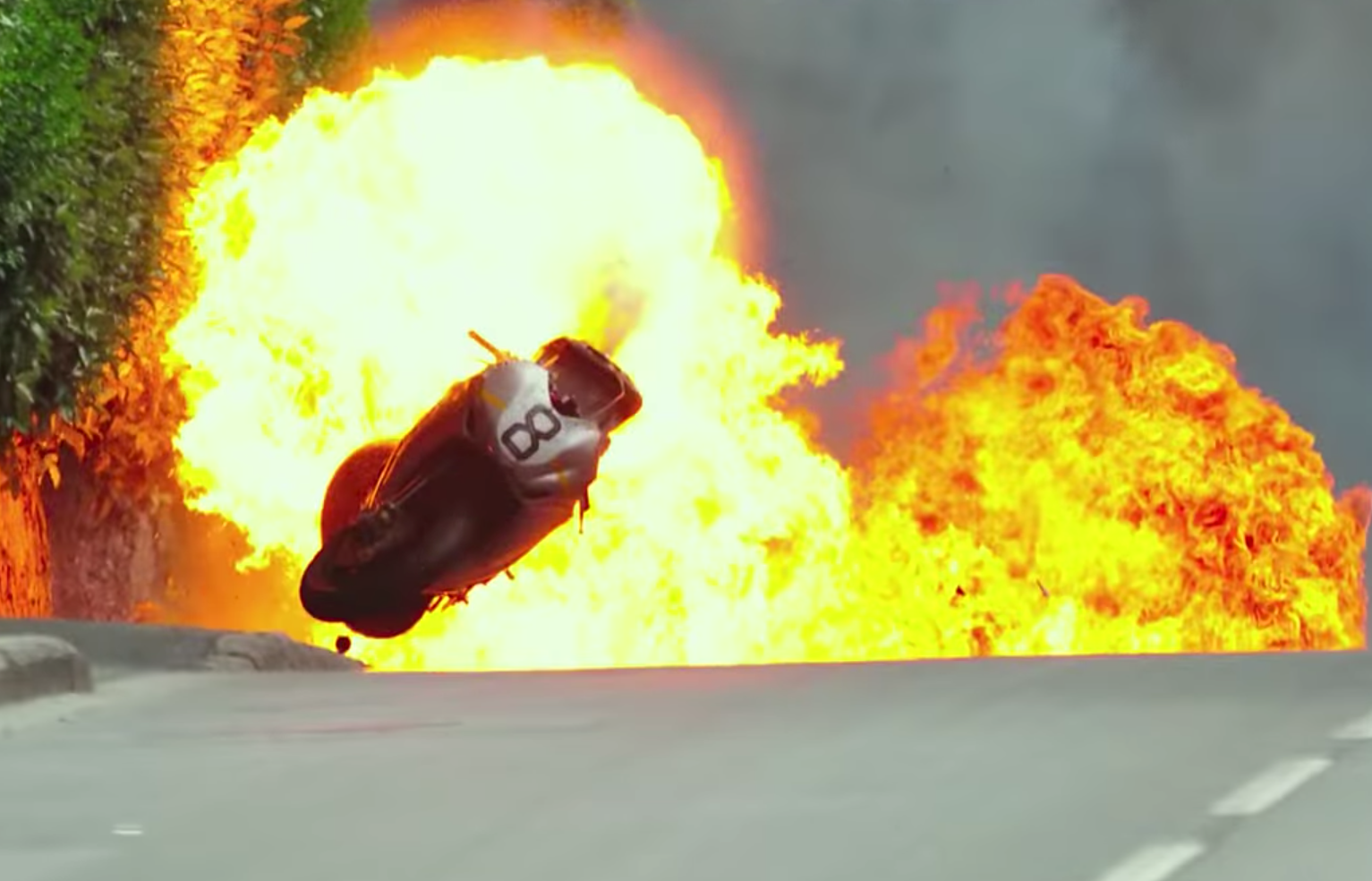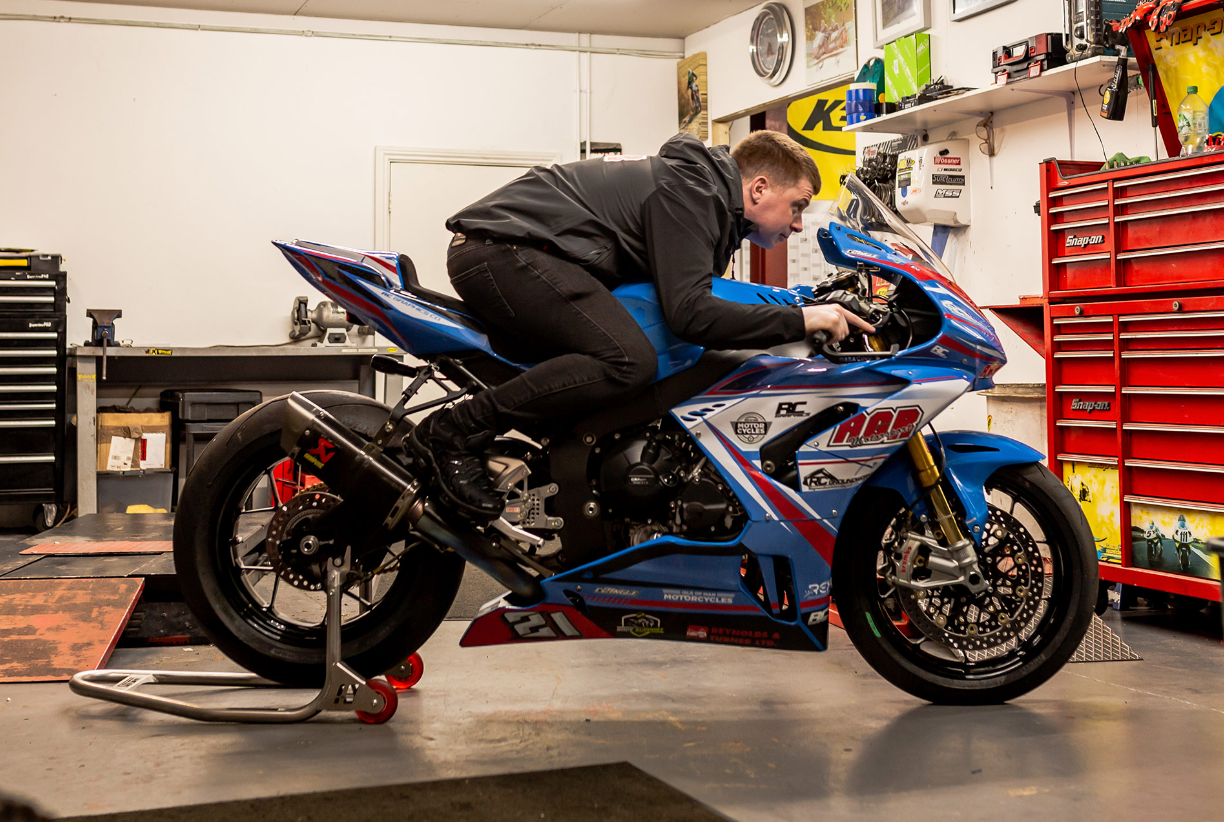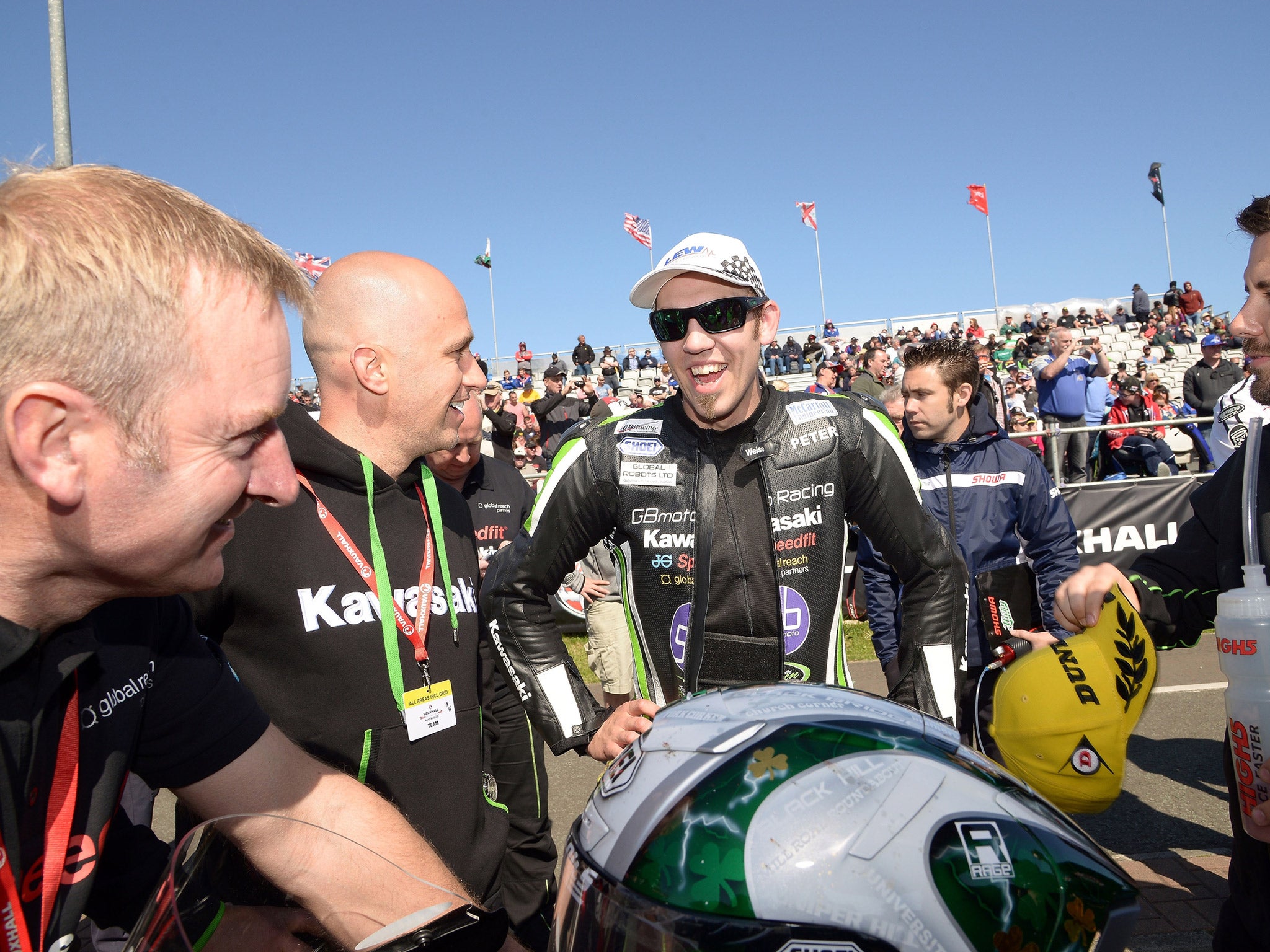Isle of Man TT: The sights, sounds and stars of the most dangerous race in the world
Six lives were claimed in last year’s event. 265 motorbike riders have died on the mountain course. So, what triggers riders to risk it all year-on-year? Kieran Jackson travels to the Isle of Man to meet the daredevils seeking the thrill – and peril – of a lifetime


John McGuinness is all too aware that this time, any time, could be the last time. With 23 Isle of Man TT wins to his name – a record for any living rider – and more than 100 races heading into his 20th year in 2023, the 51-year-old does not need telling twice. He might not be coming back.
One form of preparation always needs fulfilling.
“When I’m getting ready for the TT, I wash the cars, mow the lawn, put the finances straight,” he says. “Stuff like that. Because you never know.”
It’s more than caution, it’s reality. Why? Because for two weeks every year, this island in the middle of the Irish Sea plays host to – with little argument – the world’s most dangerous race. The 37-mile Mountain Course, with 219 turns where speeds can hit a lap-average of 135 mph and a maximum pace of 206mph, has claimed 265 lives in both the TT and August’s Manx Grand Prix, effectively the amateur competition.
But there is nothing amateurish about it. For its treachery and deadliness comes a thrill and exhilaration which, as The Independent learns in speaking to those who risk their lives for such sensations, is not matched anywhere. Not just in motor racing. Literally anywhere.
Yet is that enough? After six riders died in the 2022 edition, have some thought twice about a return this year? And as they propel themselves down Bray Hill up to the formidable Ago’s Leap – flying through time in the most spine-chilling seconds in motorsport – do they actually think about the unthinkable?
****
They say the moments before take-off are the worst. Anticipation has been bubbling, nerves jangling, ever since last year’s TT concluded. For most of the daredevils who ride a motorbike in this event, 12 months’ worth of work, of preparation, of jostling with the mind, comes down to an official’s tap on the shoulder – the TT’s rather old-school method of lights out.
For Ryan Cringle, this will all be new. Cringle is a local; a Manxman who has dominated the island’s racing scene. His younger brother, Jamie, made his debut last year. Now 29, Ryan is no stranger to being in-and-around the paddock but had delayed entering the TT until he felt comfortable. Well, as comfortable as can be.
“My emotions have not been bad until this weekend,” he says, the night before his first laps on the bike as a newcomer. “I struggled to sleep last night because, s***, it’s getting real now.”
ISLE OF MAN TT - Q&A
What is the Isle of Man TT?
A series of motorbike races held every May-June for two weeks in the Isle of Man. 2023 will be the 102nd edition.
How many races are there?
A record 10 in 2023.
What does TT stand for?
Tourist Trophy. It first ran in 1907 and attracted riders from England and Europe, intended for motorcycles ‘similar to those sold to the public’ called touring machines.
Is the TT part of any world championship?
Not anymore. In 1977, the TT lost its world championship status (now known as MotoGP) due to safety concerns.
Beyond the experienced racers who, of their own accord, return every year there is a fervour that the ultimate decision comes at the beginning. Aware of the very real consequences – with little in the way of course protection should you crash – will you give it a go?
Seek the ultimate thrill, parallel to the peril of a lifetime.
“I’m not shy speaking about what could happen,” Cringle adds. “That’s the reality and everyone knows that. There’s no point getting beat up about it. I see certain sections of the track and start getting anxiety, a sick sinking feeling in my stomach.
“When your time is up, it’s up. If it’s going to happen, it’s going to happen.”
Come Monday morning, with the start delayed by 25 minutes, Cringle’s time has arrived. Starting in view of the main grandstand on Glencrutchery Road, he is away. The acceleration, even from a standing-start, is mind-boggling. And on the approach to Bray Hill, the pace only picks up.

On the other side of the road from the stands is Douglas Borough Cemetery; the underlying threat in very firm view. Cringle’s TT career has begun: an ambition realised.
But some don’t make it back. The first week of practice and qualifying is designed to give the riders ample time to learn the intricacies of the course, with a typical lap taking around 17 minutes. Confidence is slowly built-up, lap times are slowly whistled down.
By the second week, race-week, the field are ready to put it all on the line. 2023 will be the biggest event in the competition’s history with 10 races in total, while the finale of the Senior TT is now a day later, on Saturday.
Two of those 10 races are sidecar races; piloted by a driver and a passenger, these three-wheeled machines can hit speeds of 160mph, with the TT track negotiated with roughly 60% of the throttle wide open.
When your time is up, it’s up. If it’s going to happen, it’s going to happen.
Driver and passenger must work in perfect harmony, with the driver kneeling behind the wheel while the passenger transfers their weight left-to-right or forward-to-back, depending on the corner.
Which is why, often, teams are families.
Last year, tragedy struck. The father-and-son duo of Roger and Bradley Stockton died after a crash at Ago’s Leap on the final lap of the final sidecar race. Roger, 56, was competing in his 11th TT; Bradley, 21, his first.

Heartbreaking, of that there is no doubt. But Bradley had fulfilled a dream by competing in the TT alongside his father. Having grown up in the paddock, he decided at 16 he wanted to replicate his dad, insisting he simply “couldn’t wait to race in the TT.”
It is a feeling all too familiar to the Birchall brothers. Hailing from Mansfield, the brothers nine years apart in age are 12-time TT winners – and won both sidecar races last year.
“You’re so desperate to come back,” Ben, the driver, says in the refreshingly informal environment that is the TT paddock. “It’s like touching a f***ing red hot poker. You’re not supposed to but you keep thinking… should I? And you do.”
Tom, the passenger, is in agreement: “You do not experience this buzz anywhere else. Ever. You’ve done so much work, it’s now or never. Put it all behind you and go for f***ing hell. He’s fully committed so I need to be on his level of commitment. You know what’s at stake – that big silver trophy and the feeling in the winners’ enclosure.
“It’s a drug. It’s your dopamine level saying get me back there, I want to do that.”
Thundering down Bray Hill past the petrol station on the right, with hordes of spectators lining the playing fields of St Ninian’s High School on the left, there cannot be any second thoughts.
“No build-up,” says Ben of the race start and negotiating Bray Hill. “Zero to 160, get on with it. If you want to do it any good, you have to do it flat out. There’s no choice.
“Because you set off from a standing start and you’ve got time, you make a better job of your [gear] shift. Perfect, perfect, perfect.”
Tom has to match it, too. “You set off down Bray Hill, there’s no point going ‘hang on Ben, I’m not ready.’ Be ready. Be there. You’re not going to better that. You build up this protective barrier.”
The brotherly bond is pronounced. “He’s my mate. Imagine you’ve just won a TT. And I get to do it with my brother who I love,” concludes Ben. No wonder they’re the favourites again this year.
Yet if to illustrate the risks that come with the rewards, later on opening day, The Independent is pencilled in to speak to the Crowe brothers, who also ride a sidecar. But passenger Callum is being treated for a leg injury in hospital after clipping the inside of Laurel Bank in qualifying.
“Bit sore, but nothing major,” is the response from their camp.
In the Isle of Man, no interview is guaranteed.
A crash in practice week, you would think, puts you off. That dose of reality amid the adrenaline-fuelled ride. But not for Sam West. In 2022, he was involved in a high-speed crash at Laurel Bank. Suffering a hole in his hand and severe knee injuries, his bike quickly burst into a fireball. But a few days later, miraculously, he was back on the bike in time for race week.
“I was so frustrated with my body taking its time to heal,” he says, present in the paddock a year on. “By the end of race week, I definitely wasn’t fit. I was fatigued, it was dangerous.
“But the TT has become my life’s work. Everything revolves around it, even my motorbike shop in Stoke. I can only do the life I have because of the TT. Without it, I’d feel like I wouldn’t have a life. My girlfriend who I met racing in Macau, says ‘stop doing it’ but I don’t think she quite understands how important it is to me.”
The buzz is something everyone at the TT talks about it. Understandably so. But something quite often overlooked is the skill of each rider to compete on the mountain course. Crazy lunatics? Solely adrenaline junkies? Insults, the pair of them.
“A lot of people think we have to take out our brains to go fast here, it’s the complete opposite,” tells Peter Hickman, the all-time lap record-holder at an average speed of 135.452mph in 2018.
“It’s about using your brain and calculating the risk at the right time. We’re not just idiots, we’re not just crazy. The people who win here and are here for a long time are clever people.”

If the skillset of the drivers is an aspect of the event often ignored, calls for it to be banned are not. Nowadays, those calls usually rear their head on social media. But every driver spoken to repeats the same fundamental principle: free choice.
“It’s a risk we’ve all already accepted,” Hickman insists after the first day of practice, where he hit a top speed of 200mph. “If I make a mistake, I know what the consequences are. If I’m OK with that, I’m here. If I’m not, then I wouldn’t be here.”
And some do think twice. Glenn Irwin was 2022’s best newcomer but is missing out this year, stating: “As a father, it is the right choice.”
But for most, the temptation is too strong. “You can talk about this place until you’re blue in the face… until you stand at the roadside and see a bike go past you at 190mph, you won’t get it,” says Hickman, who like many others ‘warms up’ for the TT by playing the official video game on his PlayStation.
If I make a mistake, I know what the consequences are.
“It’s not just visual, it’s a feeling. When people come here for the first time, even people into bikes and racing, they see the first bike go through and they literally can’t talk.”
****
As the bike accelerates down Bray Hill up to Quarterbridge Road and over Ago’s Leap in a manner ethereal as well as ferocious, leaves are shifted from their spot on the pavement. A marshal in a high-vis top standing on the footpath, unfathomably close, raises his eyebrows. You hear the bike’s engine before you see it, but only marginally. Gone before you can blink, fans touch their left ear. A deafening sound.
For a spectator, a spectacle like no other. For a regular rider, the norm; apexes must be hit. For a newcomer?
“I had a lot of doubt just before I started,” says Cringle, the morning after the day before. “Bray Hill is mental – as you go over the right (turn) before you flick a left (turn) and go down the hill, there’s a bump. The wheel comes up and you start setting the bike down, then there’s a big bump again and before you get to the bottom, the bike compresses and you’re doing a wheelie.
“I don’t know how to put the whole lap into words. It’s scary, the bike was shaking, but it’s just grit your teeth and get through it.
“I did it and was like holy s***. It was nuts. But so, so good.”

The danger is palpable but improvements in safety are always strived for. Virtual red flags are now in operation to quicken communication between the 400 marshals positioned around the course. Each bike is now fitted with compulsory GPS technology. Riders must also wear chest armour beneath their racing suits; a move enforced last year which West credits with saving his life.
“I hit the wall and while the armour was pulled apart, I didn’t have a single bruise on my chest,” he reveals. “It saved my life – 15 years ago, I’d have died from internal organ failure. It’s the ignorance of the human though. We think it won’t happen to us, we turn a blind eye as much as we can.”
And there, in essence, is the TT. The ultimate risk, with the prize of ultimate liberation. As qualifying fizzles out with race week on the horizon, the riders are in their own zone. Not racing others, so much as themselves. Enraptured in their own bubble, under the helmet, with just the bike and the road in their minds. Little wonder they keep coming back.
“It’s a compliment to the TT to say I’d stick my neck on the line,” West sums up, leaving a question lingering in the air. “The course is hair-raising. This is my life. I give everything to the sport.
“Life is there to be lived. Would you give up your life to avoid dying?”
Join our commenting forum
Join thought-provoking conversations, follow other Independent readers and see their replies
Comments
Bookmark popover
Removed from bookmarks